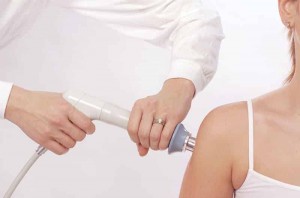 Tennis elbow is used to describe the pain that develops on the exterior of the lateral part of the elbow. It is known by other names like lateral epicondylitis, rowing elbow and the tendonitis of the common extensor origin. Its origin remains unknown, though researchers associate it with the exertion of excessive pressure on the tendons located on the elbow, especially among athletes.
Tennis elbow is used to describe the pain that develops on the exterior of the lateral part of the elbow. It is known by other names like lateral epicondylitis, rowing elbow and the tendonitis of the common extensor origin. Its origin remains unknown, though researchers associate it with the exertion of excessive pressure on the tendons located on the elbow, especially among athletes.
Pain can last for 6-24 months based on the extent of damage on the ligaments. The condition affects 1-3% of people aged 40-50 years. Conservative treatments like ultrasound, steroid injection, nonsteroidal anti-inflammatory drugs and manipulative techniques have been used to treat tennis elbow, but none of them has produced consistent results. Surgical procedures have also been used on patients with persistent symptoms, but the outcomes are unpredictable.
Shockwave therapy was developed as a result and focused on applying single-pressure pulses for short periods on the elbow. The therapy was first administered for medical purposes to treat renal calculi and was later used in Germany to treat musculoskeletal disorders like plantar fasciitis, humeral epicondylitis and the rotator cuff. In 1995, the German Society of SWT declared that the therapy could be used to treat a range of orthopaedic conditions, including lateral elbow pain.
How Shockwave Therapy is Performed
The physiotherapist assesses the patient during the first visit. This examination is to ascertain that the patient is an appropriate candidate for the treatment. Shock waves are sonic waves that release mechanical energy at the interface of two substances that have different acoustic impedance. During administration, a focusing device and an electroacoustic conversion mechanism are used. The focusing device helps release shock waves that pass through the skin to treat the affected area.
Techniques for using ESWT to treat musculoskeletal problems are yet to be standardised, but previous clinical trials show high-energy shock waves of 0.2-0.4Mj/mm was used to treat calcific tendinitis and low-energy shock waves for heel pain and lateral elbow pain. The therapy can be administered more than once (usually once every 3-6 weeks) based on the results. General anaesthesia is given when high-energy shock waves are used.
Benefits of the Therapy
Studies show that grip strength, pain and function improved after the procedure. Here are some of the additional benefits of the therapy:
- Non-invasive treatment for chronic tennis elbow pain
- Cost-effective means of treating the condition
- Reduced side effects
Effectiveness of the Therapy
Studies show the therapy has a 77 % success rate when combined with chiropractic care to treat tennis elbow. The procedure has a 91% success rate on patients who have calcific tendinitis and a 90% success rate on patients with plantar fasciitis.
Side Effects
After the treatment, the patient may experience tenderness, temporary soreness and swelling for some days as the procedure leads to an inflammatory response. Patients may also experience pain, reddening of the skin and nausea. Physiotherapists prohibit the use of this procedure on patients with nerve disorders, metabolic bone infection and bone tumours. Also, expectant women, people with open wounds and patients using blood-thinning medications are not eligible for this treatment.
